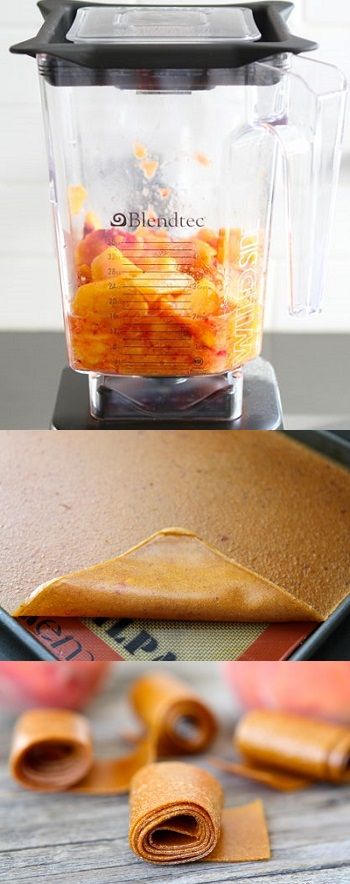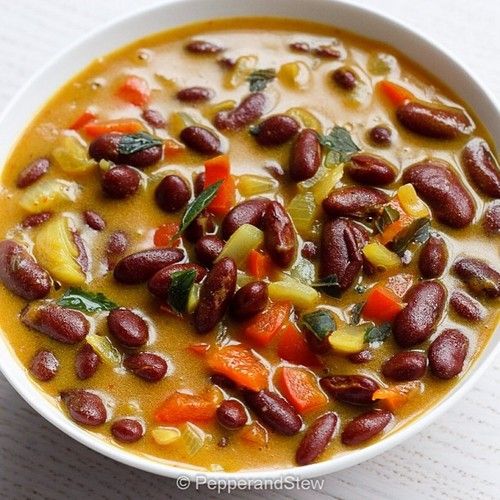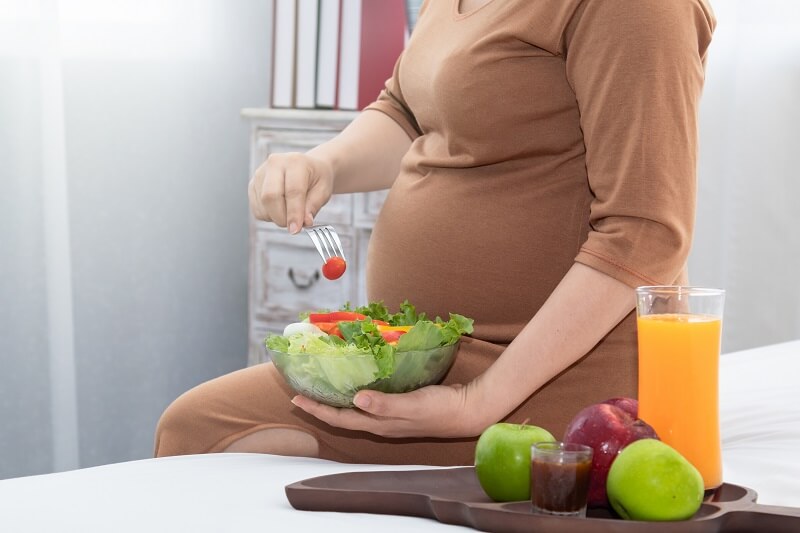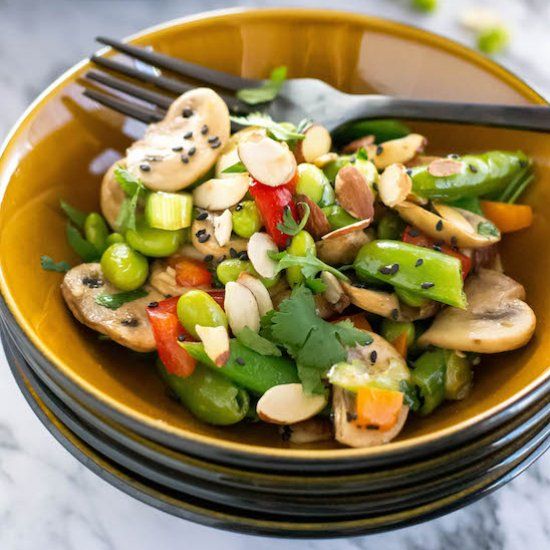Homemade baby food recipes vitamix
Some advice from a new mom
Last Updated June 19, 2020
Update May 7th, 2019: New video tutorials and demonstrations!
First one, a 90-second tutorial on making Vitamix baby food!
Second one, a long-form tutorial about mistakes we made while making Vitamix baby food:
Update April 10, 2018: We now have a baby of our own that’s the perfect age to feed baby food purees. Fun!
Here’s a clip of us on the local news talking about making baby food purees.
Video: Baby Food Blending on Local News
Original article from 2016
When the fiancée first pitched an article about baby food purees in a Vitamix, I just about puked. (I also considered inconsolably crying, flailing my limbs, and drooling).
But we were headed to Minnesota for a family weekend and my sister, Alana, was going to be there with her 7-month old son, Norman. Fine.
So I sat down with Alana and asked her some questions.
To my surprise, making baby food purees in a Vitamix (or any blender, for that matter) is actually a pretty awesome thing to do.
Here are a few highlights from the conversation. Afterwards, you’ll find three Vitamix recipes for baby food purees (good for adults, too, that need or prefer to eat their food with a spoon.)
Enter Alana: New mom and maker of her own baby food purees
Alana Matthew, 30, worked in sales at DirecTV for seven years.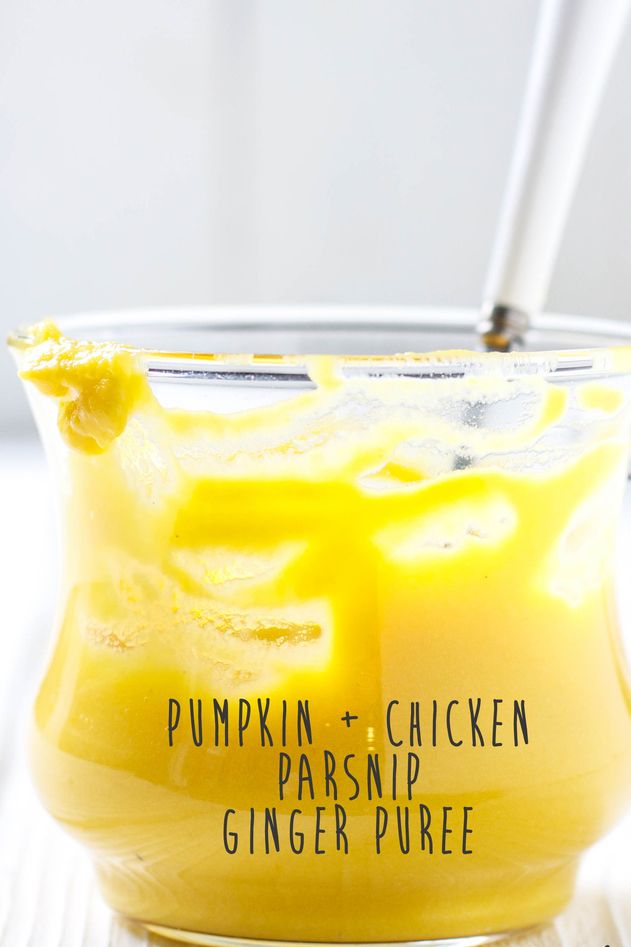 Now, she is a professional mom. Her parenting style is somewhere between thoroughly by-the-book and progressively perfectionist. Her son is Norman and was playing with (trying to “eat”) some plastic toy during our interview. Despite being my nephew, he is objectively a ridiculously cute baby.
Now, she is a professional mom. Her parenting style is somewhere between thoroughly by-the-book and progressively perfectionist. Her son is Norman and was playing with (trying to “eat”) some plastic toy during our interview. Despite being my nephew, he is objectively a ridiculously cute baby.
LINY: You are my sister. We got you a Vitamix for your wedding. Besides supporting Life is NOYOKE and being a kind sister, why do you use a Vitamix to make baby food purees for your baby?
Alana: I didn’t know anything about baby food. So when I first picked up a package of baby food, I was surprised it had other things in it besides peas. There’s like lemon, something acid, or, you know, you can read the package… The things are not bad for you. But it’s not peas.
LINY: Preservatives and…
Alana: Yeah. It sits on the shelf. So what is in it? So, if I can give him just peas, then I would prefer to do so.
LINY: Good. It’s like I coached you to say that!
Alana: Yup. I also like it because you can introduce one food at a time. Then, you give it to him for three days to see if he’s allergic. And a lot of the foods that I had to store-buy yesterday (because we’re traveling) are a mix. So, like, mango and peach. But I would prefer to give him just peach. Here is a peach. Here’s what it tastes like and see if he’s allergic.
LINY: Less is more with smoothies, too.
Alana: And also there’s the convenience. The other night, we had so many leftover brussels sprouts. We weren’t going to eat them before they went bad. So I Vitamixed them and froze them for Norman. Instead of wasting them, I fed them to the disposal. *points to the baby*
LINY: So it sounds like it helps avoid waste. Is it actually convenient to use a Vitamix to make baby food?
Alana: Yes, but the cleanup is not. That’s not the Vitamix’s fault, though. That’s just serving homemade baby food in general.
That’s not the Vitamix’s fault, though. That’s just serving homemade baby food in general.
LINY: How does baby food (in your Vitamix) compare to store bought from a price perspective?
Alana: Crazy. A jar, which is a serving, is a little over a dollar. And what is a bag of peas or a bunch of asparagus or brussels or beans?
LINY: Do you get frozen peas? Can you get fresh peas? Is that a thing?
Alana: I get frozen. But, everything else is fresh. And a bag of fresh beans costs like three dollars. And that made three ice cube trays worth. Which is like 14 servings.
LINY: So one pack of peas is worth like 15 bucks of what you’d buy in pre-made baby food.
Alana: It’s probably a dollar per serving versus 20 cents.
LINY: But do you think about that? Price?
Alana: Of course! Coming here this weekend, this was my first time having to buy baby food.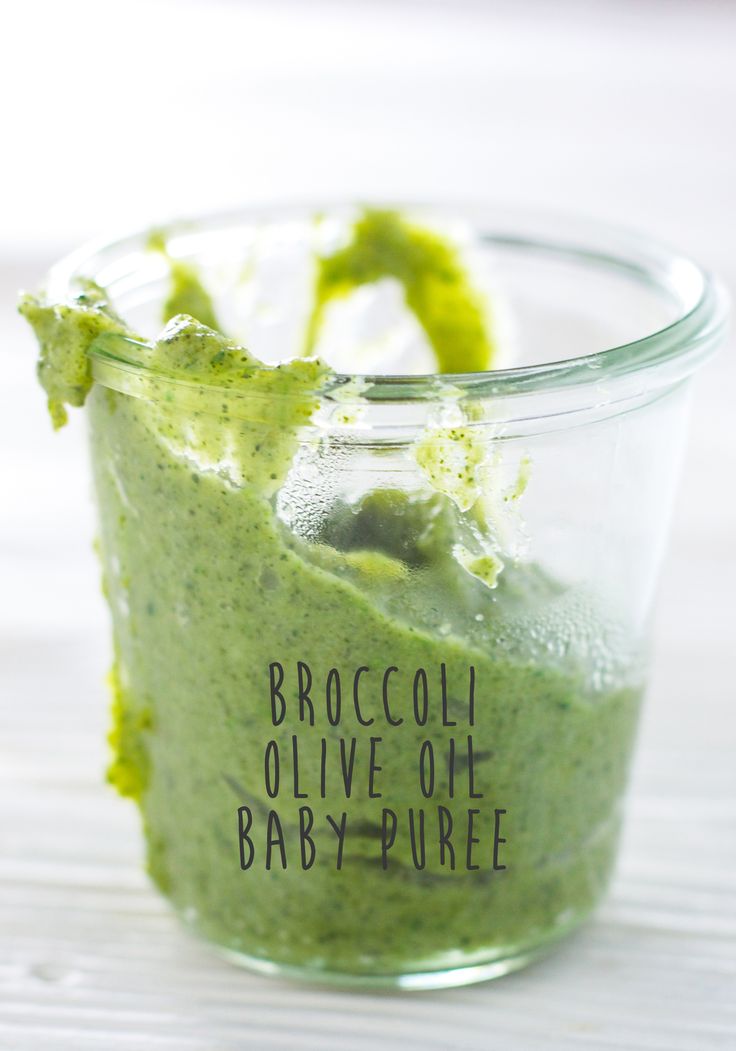 And I was like, this is a dollar, per!?
And I was like, this is a dollar, per!?
LINY: Certainly you don’t always use your Vitamix to make all his baby food, right?
Alana: Right. There’s easy stuff. He loves banana. Avocado.
LINY: What do you blend up?
Alana: I’ve blended carrots, sweet potatoes, butternut squash, beans, peas, brussels sprouts, asparagus, pears, and apples.
LINY: Not all together, right? Individually.
Alana: Yes. Individually.
LINY: When you do that, do figure out what the ratio should be? Do you add water?
Alana: I steam them. I steam everything before I blend except for the pears and the apples. We have a steamer. It catches the “sweat.” That has all the nutrients, so I put that back in the blend. The steam softens them, too. No water needed.
LINY: So you make the purees and put it into ice cube trays?
Alana: Yup.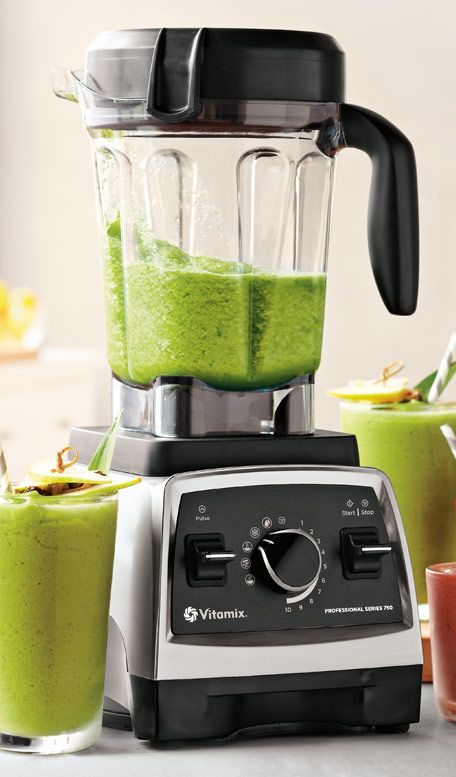 Then I freeze it overnight. In the morning, I pop them out and put them into big zip lock bags. My freezer bags have labels saying the date and what it is. The night before, I take out three meals and put them in the fridge. That way they’re defrosted for the next day.
Then I freeze it overnight. In the morning, I pop them out and put them into big zip lock bags. My freezer bags have labels saying the date and what it is. The night before, I take out three meals and put them in the fridge. That way they’re defrosted for the next day.
LINY: So at Life is NOYOKE, we are 100% dairy free. But we are 100% supportive of breast milk for babies (and dare-prone brothers-in-law who are married to your twin sister). Have you ever made your baby a smoothie with breast milk?
Alana: No. But some people do popsicles. Boobsicles. Great for when they’re teething.
LINY: Our brother-in-law James would eat that.
Alana: But a smoothie? No. But the directions to make baby food say you can add water, formula, or breast milk.
LINY: Okay, back to topic. How much baby food do you make at once?
Alana: It depends on whatever I buy. For example, asparagus, I just buy a bunch.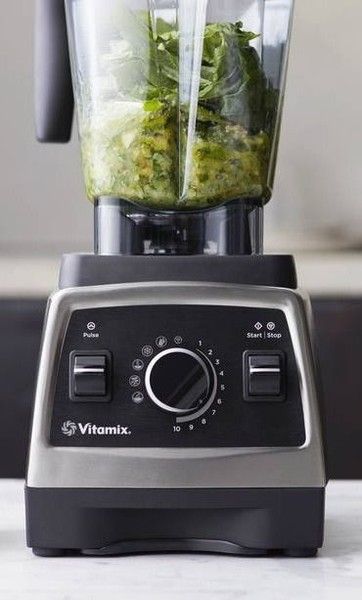
LINY: Do you have to use your Vitamix’s tamper, or no?
Alana: Yes, sometimes. I did yesterday with the brussels. Because it can get stuck on the sides.
LINY: What advice would you give to mothers about making their own baby food?
Alana: (Speaking to Normie) You think that’s funny? … I think that in the beginning, and I’m still kind of dealing with this, is that I have this overwhelming feeling that I want him to try every single vegetable. And I have to give it to him for three days. But if you’re making homemade baby food purees, the amount of vegetables in the world is endless. But if you’re buying pre-made, there’s three: Peas, carrots, sweet potatoes. So, I try to remind myself that I don’t have to introduce him to every single one. He’ll try them in time.
LINY: Let him make his own mistakes, eh?
Alana: And, he likes pears. So I always have frozen pears in a bag.
LINY: Any other advice?
Alana: It’s a lot of dishes. Because my doctor recommends, basically, two things every meal. So a cereal and a vegetable. Or a cereal and a fruit. Or a fruit and a veggie. And so it’s two dishes right there.
LINY: What do doctors know about nutrition?
Alana: Nothing.
LINY: Thank you. I’m going to link to that article I wrote about Doctors knowing nothing about nutrition. Okay, go on.
Alana: Sometimes I use a baby-sized, cheap mixer we were given. Like for a single peach. “You like peaches, don’t you cause they’re yummy!”
LINY: I get that. If you had an S-Series (in-depth review), you’d really be a one-stop-shop-baby-food-puree-maker-lady.
Alana: So why didn’t you get us that one?
LINY: Because the Pro 750 (in-depth review) is better.
Alana: I think it’s time for a nap.
Other Noteworthy Versions
- My Life on a Plate: Baby Food | Butternut Squash Puree
- Do It On a Dime FAMILY: How to make baby food: BULK COOKING
- MOMables: How to make baby food at home
Recipe
- Yield: 15 servings, approximately
- You're needed for: 10 minutes
- Until it's done: 10 minutes
- Lenny Gale
Baby food purees in a blender
Ingredients:
- peas - one bag frozen
- asparagus - one bunch, fresh
- sweet potatoes - 3, peeled
- pears - 3, cored
- carrots - 3 large carrots
- apples - 3, cored
- beans - 3 cups
- corn - 3 cups
- squash - 3 cups
Instructions:
- Pick one ingredient.
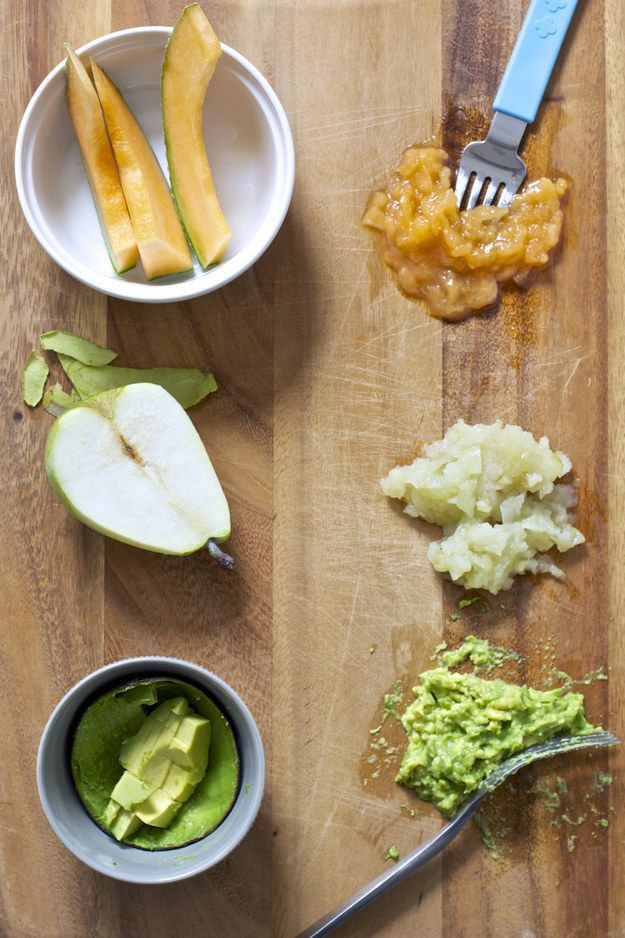
- Peal and seed it.
- Steam it.
- Blend it.
- Pour into an ice cube tray.
- Store in freezer for up to three months.
- Defrost overnight in refrigerator before serving.
NOTE: This “recipe” is adapted from this baby food puree instructional on the US Vitamix site.
Useful tips for Let’s Talk Baby Food Purees
Here’s a summary of tips for making baby food purees from the convo above:
- Embrace the cost savings. They’re significant.
- Steam, first. Use the “sweat” in the blend to maximize nutrients.
- Use ice trays to freeze the baby food overnight.
- Pop cubes into a plastic bag and label.
- Pluck food from freezer for next day the night before.
- Don’t worry about exposing baby to every food on the planet.
- Enjoy the precious moments. It flies by.
How to Make Homemade Baby Food in a Power Blender
3007 shares
Ready to use your blender to create healthy, easy and delicious meals, snacks, smoothies, condiments, cocktails and treats? On sale for 73% off LIMITED TIME OFFER!
How to Make Homemade Baby Food in a Vitamix or Blendtec Blender
Most homemade baby food in a blender only requires 2 ingredients.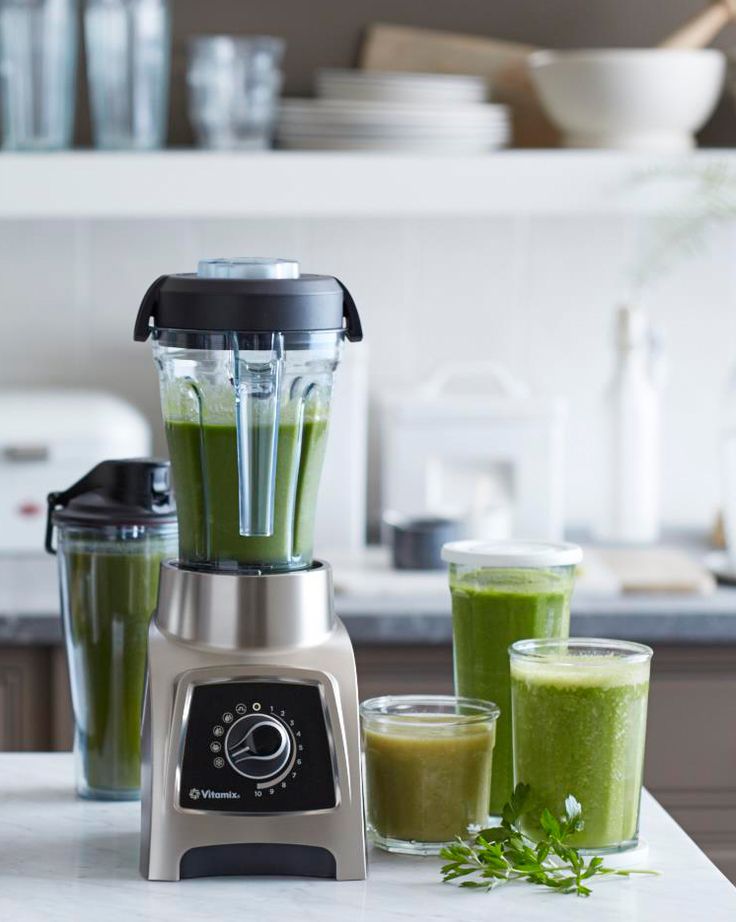
- Choose the first ingredient (the flavor) and add to blender: carrots, peas, pears, etc. If the ingredient is a vegetable, it must be steamed prior to blending.
- Add the second ingredient to blender: water, formula, or breast milk. Where the recipe calls for water, a formula/water mixture may be substituted. (Do not add formula in powder form).
- Blend until desired consistency is achieved.
Who knew that making your own fresh homemade baby food in a Vitamix or Blendtec blender could be so EASY?
Every parent wants to provide their baby with the best nutrition, so what better way than to make your own baby food.
It’s much easier on your wallet (even more so when comparing to organic baby food) AND you get to control what you put in your baby’s body.
You don’t have to be a gourmet chef or have tons of free time to do it either!
Let’s face it, life is busy, especially when you throw kids into the mix! With little prepping, let your high powered blender do the work for you!
Your healthy pureed baby food can last refrigerated for 3-4 days or up to 3 months in your freezer, saving you time during mealtimes since all you have to do is pull it out, thaw, and heat for your sweet little one!
Blender Babes recommends using organic fruits and vegetables when possible.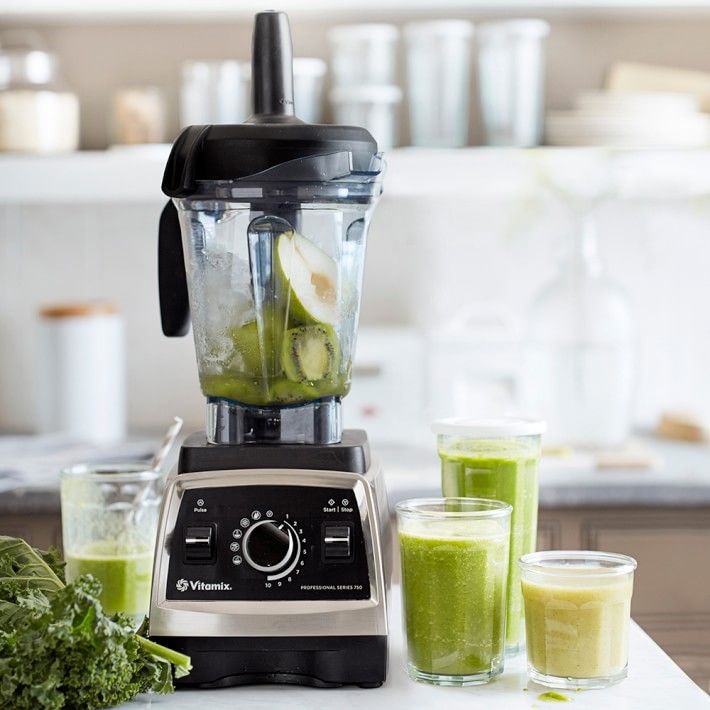
- Choose 2 cups of one or more ingredients and prepare accordingly. Place into the Blendtec container along with 1/4 cup (60 ml) water, formula or breast milk and secure lid.
- For most puree foods, push the SPEED UP button until blender reaches speed 4. Allow the blender to run for 15 seconds and then press the PULSE or “X” button to stop. If mixture is too thick, remove the lid and add additional water, formula or breast milk, 1/4 cup (60 ml) at a time. Continue blending to achieve desired consistency.
- Serve immediately or freeze excess baby food in ice cube trays.
- Choose 2 cups of one or more ingredients and prepare accordingly. Place into the Vitamix container along with 1/4 cup (60 ml) water, formula or breast milk and secure lid.
- Select Variable 1.
- Turn machine on and slowly increase to variable 4. Increase speed as needed, depending on ingredients used, to achieve the desired consistency.
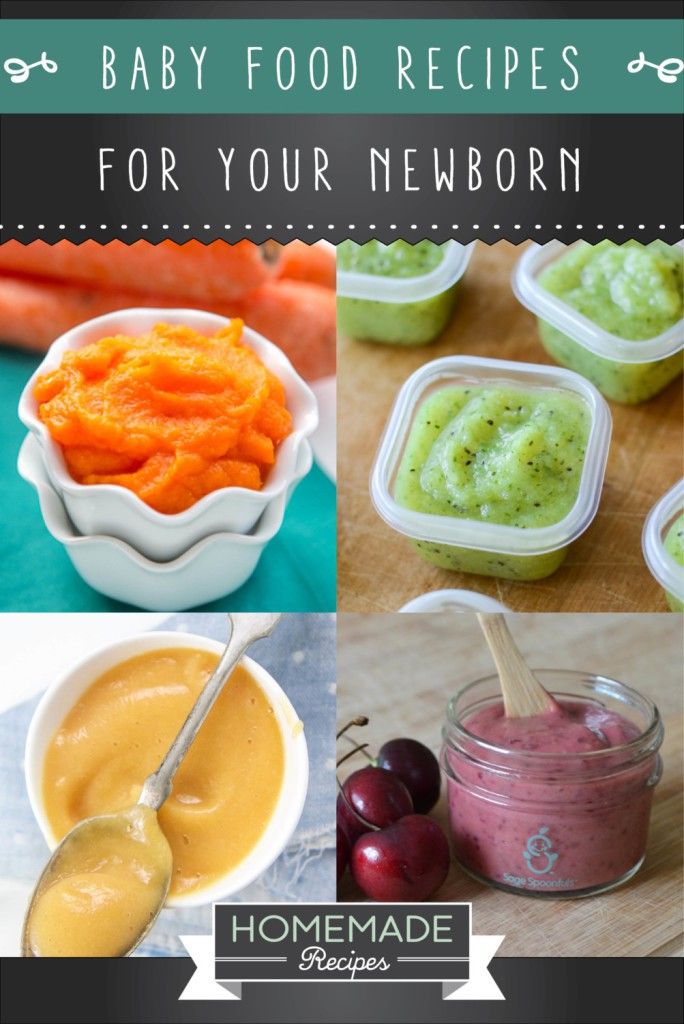
- Blend for 20-30 seconds. If mixture is too thick, remove the lid plug and add additional water, formula or breast milk, 1/4 cup (60 ml) at a time through the lid plug opening. Continue blending to achieve desired consistency.
- Serve immediately or freeze excess baby food in ice cube trays or baby food storage containers.
Tip from the Moms in our Blender Babes Tribe:
To get more nutrients, use the cooking water when blending, unless you are making pureed carrots.
If you are making carrots, do not reserve any left over water to use for thinning out the carrots if baby is under 8 months old as Nitrates may seep into the cooking water.
When making batches of baby food for freezing, only use freshly-expressed breast milk – never use frozen breast milk that has been thawed.
Please consult your child’s pediatrician for specific nutritional requirements and when to introduce solids.
Carrot Baby Food Recipe Tutorial Using a Vitamix!
Banana Baby Food Recipe Tutorial Using a Blendtec!
Note: The Blender Babes now wear activewear.
Shannon Hoglund
Shannon is a marathon runner, yogi, jet setter, foodie, and mommy. She lives in the San Francisco Bay Area with her husband and daughter where she enjoys being active outdoors as much as possible and spending time with friends and family. Keeping healthy and fit is a main goal of Shannon’s, along with inspiring others to also lead a healthy and active lifestyle.
Blender Babes
PRAISE FOR BLENDER BABES
Thank you Blender Babes, for the Amazon Card and the opportunity to purchase a refurbished Blendtec. I could not have afforded it otherwise.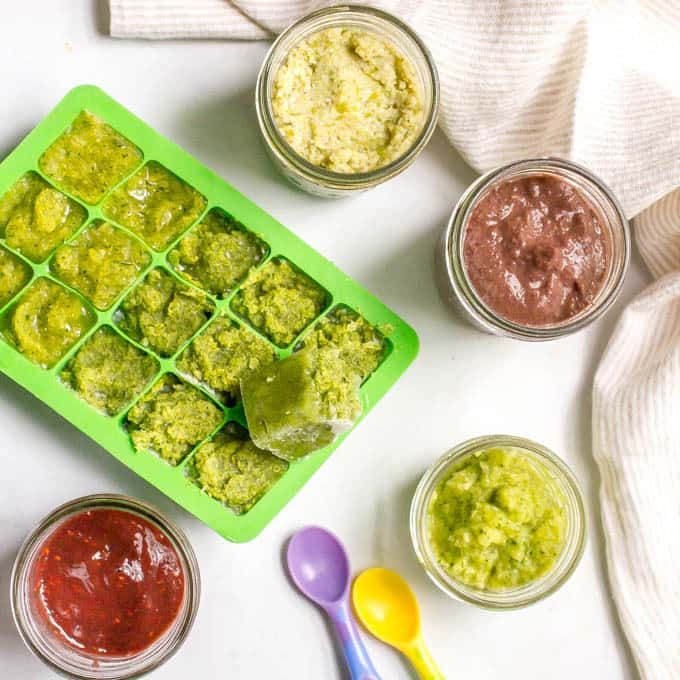 ~ Anne
~ Anne
THANK YOU SO MUCH, we have killed the last 2 blenders in our family of 4. My kids will be so happy to be able to make awesome smoothies. Really impressed with your site. ~ DeLibero Family
As an applaud to your site, I am returning my recently purchased but unopened Blendtec 570 and getting the refurbished Blendtec Classic based on your reviews and promotions. ~ Cameron
I feel so light and all clean now. My junk food craving has gone down. This is sooo good to be a lifestyle change. ~ Manasa
I wanted to thank you and your team for the information provided, which encouraged me to finally by a Vitamix after all this time. My family & I absolutely love it, smoothies will never be the same. ~ Mark
I put my new Blendtec to good use today making a pretty amazing fiber rich juice. I didn't even have to cut anything I I put in it. Very impressive! :) ~ Matt
I really enjoy your website and videos. So much so that I ordered a Blendtec today! It’s obvious that you have passion for this topic. We are looking forward to more healthy, whole food eating! ~ Chris
We are looking forward to more healthy, whole food eating! ~ Chris
My mood and my health both got better. I am recovering from a surgery, and I think that the smoothies helped with that recovery. ~ Lisa
Thank you for your great blender reviews and recipes, my wife is super excited about her new blender. Keep up the great work! ~ Harold
Thanks for the gift card! I am looking forward to grinding my own sprouted grain flour at home!~ Elizabeth
Thank you, Ladies. The blender is astonishingly powerful. Thank you!~ Gene
Thank you so much for the Amazon gift card! I purchased my reconditioned Vitamix through your website's recommendation, and our family is having a great time using it.~ Kelly
Thank you so much for your site in helping me understand which blender is right for me!~ Heather
Popular
Recent
BEST DEALS ON VITAMIX AND BLENDTEC BLENDERS
Links to Recommended Blenders from this website and using our Exclusive Promo Codes Include FREE SHIPPING + Exclusive FREE GIFTS from Blender Babes! Click Here to Learn More!
Click for Vitamix USA Starting at $289!
Click for Vitamix CANADA DEALS!
Click Here Blendtec Starting at $279!
Use Promo Code BlenderBabes for 20% OFF All Blenders (except the Pro 800), Jars and Accessories
LIVE HEALTHIER, GET A POWER BLENDER!
Blender Babes ON YOUTUBE
10 Healthy Ways to Use Vitamix
There are blenders and there are Vitamix blenders. When it comes to chopping, chopping, chopping and of course blending, the Vitamix brand is well known for its powerful versatility.
When it comes to chopping, chopping, chopping and of course blending, the Vitamix brand is well known for its powerful versatility.
While you may pay a little more for the Vitamix than you would for a typical tabletop blender, many people find its versatile kitchen capabilities worth the money.
You've probably heard that Vitamix can do more than just make smoothies, but you may not know where to start. Want to put this workhorse appliance to good use? Here are some creative ways to prepare healthy meals, side dishes and snacks with Vitamix.
Top 10 Blenders of 2021
Fails
Gone are the days of chickpeas being mashed by hand for hummus. Speed up time from start to finish with these heart-healthy snacks by letting Vitamix do the work you would do with a fork or crush.
Try blending the unique roasted lentil hummus with red peppers in a blender for a super easy recipe.
Another spread that can cook much faster in Vitamix is pesto! (In fact, the word pesto comes from the Italian pestar , which means to pound or crush.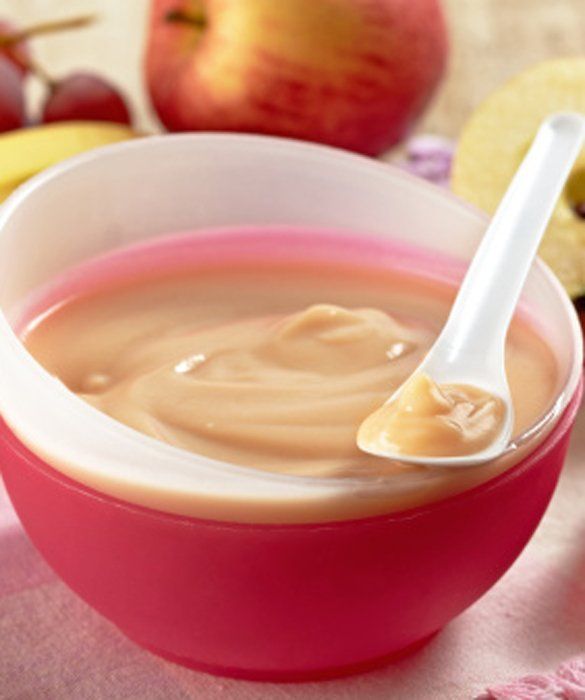 ) Try this nut-free green leafy pesto as a starting point.
) Try this nut-free green leafy pesto as a starting point.
Pancakes and waffles in a blender
Have you experienced the magical world of pancakes and waffles in a blender? Once you've done that, you may never want to go back to mixing batter by hand in a bowl.
These easy breakfast recipes call for tossing all ingredients into a blender, blending until smooth and pouring directly into a skillet or waffle iron.
The beauty here is that even harder ingredients such as oats or flaxseeds are mixed into the mixture to produce a smooth, fluffy finished product. Don't miss our simple yet hearty Greek yogurt pancakes.
Soups
When you think about what you need to make a pot of hot soup, a blender probably doesn't come to mind. But given enough time, the friction of the Vitamix's high-speed paddles can actually heat soup ingredients to a pleasantly warm temperature.
Just note that your Vitamix doesn't have to cook all the ingredients - it's usually better to pre-steam, roast or sauté vegetables and other solid foods ahead of time.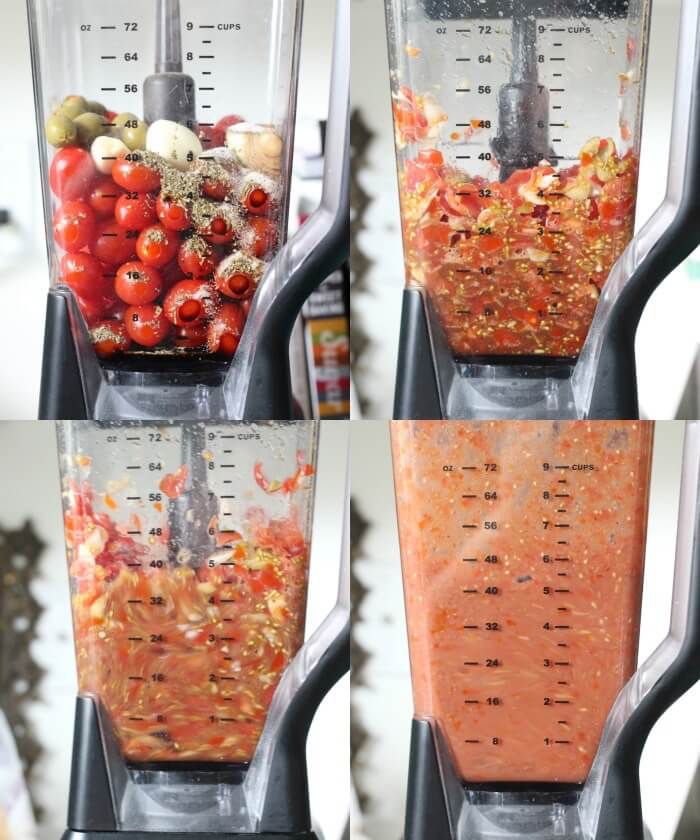
To reheat a pureed mixture of vegetables, herbs and broth, such as creamy broccoli and ginger soup? - Mix over high heat in a Vitamix mixer for about 10 minutes or until the soup begins to boil.
Cold soups are of course another option with this appliance. Any chilled ingredients you want to purée are great to use in the Vitamix.
Smoothies, smoothie bowls and protein shakes
Smoothies are probably the most obvious thing you can make with the Vitamix. Mixing fruits and vegetables with a mix of other ingredients like yogurt, juice and nut butter is a quick and easy way to add fiber and nutrients to your diet. Plus, smoothies transport well, making them a convenient on-the-go snack.
Do you have some extra time for dinner at the table? Make a smoothie with toppings like muesli, sunflower seeds, or sliced bananas.
For an easy meal replacement or a hearty post-workout snack, consider using Vitamix to make high protein shakes. (Unsurprisingly, our roundup of the best blenders for these shakes features more than one type of Vitamix.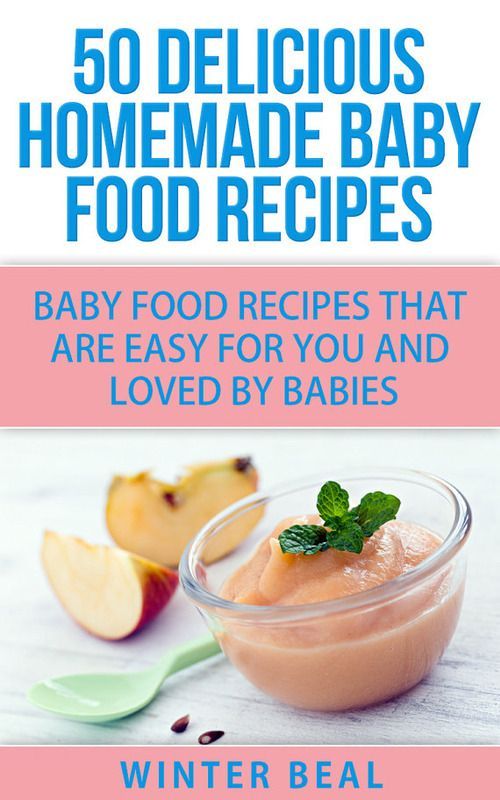 ) Make your perfect shake with healthy proteins like whey powder, pea protein, or brown rice protein.
) Make your perfect shake with healthy proteins like whey powder, pea protein, or brown rice protein.
Purees and sauces
Purees and sauces are among the products that are best suited for blenders, and especially for Vitamix. For a healthy snack, try homemade applesauce. Many of the recipes in the Vitamix don't even call for the apples to be cooked first.
Or, when you have extra fresh tomatoes, make a tomato pasta sauce. There are no limits on the fruits and vegetables you can turn into a meal garnish.
Salad dressings and mayonnaise
Store-bought salad dressings are often high in calories, added sugar and nasty sodium. If you'd rather make a healthier condiment with fresh ingredients, get your hands on the Vitamix.
Even dressings get a boost of energy from turning in this blender. Its high-speed blades emulsify oils and vinegars to a smooth consistency that you can't get with bowl whisking or shaking.
Once you've mastered the art of salad dressing, take it a step further by making your own mayonnaise at Vitamix.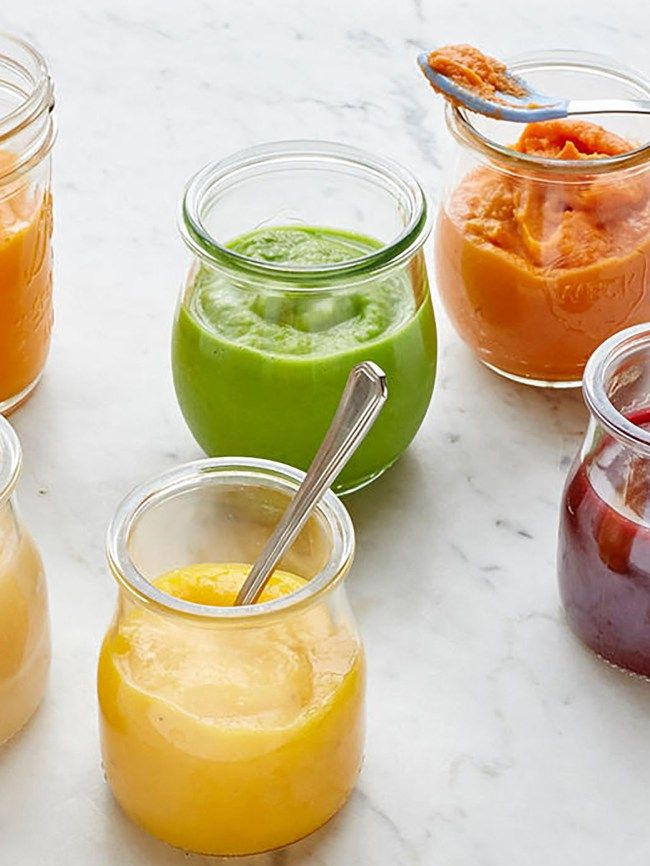 After all, mayonnaise is just a whipped mixture of egg yolks, butter, and a few other simple additions. Use heart-healthy olive oil as a base for extra nourishing sandwich spreads.
After all, mayonnaise is just a whipped mixture of egg yolks, butter, and a few other simple additions. Use heart-healthy olive oil as a base for extra nourishing sandwich spreads.
Is mayonnaise harmful?
Homemade baby food
Even your little one can enjoy the benefits of a powerful blender at home. Making your own baby food allows you to control what goes into your baby's mouth and what doesn't. The Vitamix can grind cooked fruits, vegetables and even meat to a spoon-feeding consistency.
Nutritionist's Top 12 Healthy Kitchen Gadgets
Juices and other drinks
Juice cleansing may not be a long-term solution for health or weight loss, but incorporating homemade juices into your diet can add vitamins and minerals in an easy-to-drink package .
For example, drinking cherry juice on your own can improve heart health, improve sleep, and reduce inflammation.
The key to enjoying the juice in your Vitamix is to churn it long enough to get a liquid, drinkable consistency. Or, if you prefer not to have vegetable peel pieces in your juice, strain the juice through a fine sieve or nut milk bag.
Or, if you prefer not to have vegetable peel pieces in your juice, strain the juice through a fine sieve or nut milk bag.
Crushing and Grinding
Sometimes the special ingredients required in recipes are not as special as they seem. Don't have oatmeal or almond flour for muffins? A powerful blender can blend oatmeal or whole almonds into flour. At the same time, ultra-fine sugar is just table sugar broken down into smaller crystals - it's a simple multi-pulse job in the Vitamix.
Crushing ice for a pitcher of antioxidant-rich iced tea or simply refreshing a glass of water is no problem with this blender.
Healthy Desserts
Finally, Vitamix plays an important role in creating healthier treats to satisfy your sweet tooth. "Pleasant" banana creams, frozen yogurts and low sugar puddings come together quickly in this quick appliance. The best part? Many recipes don't call for extra bowls, so cleanup is minimal.
Baby food at home: recipes, video
Growing up a little person is a delightful process that cannot but please the parents of the crumbs.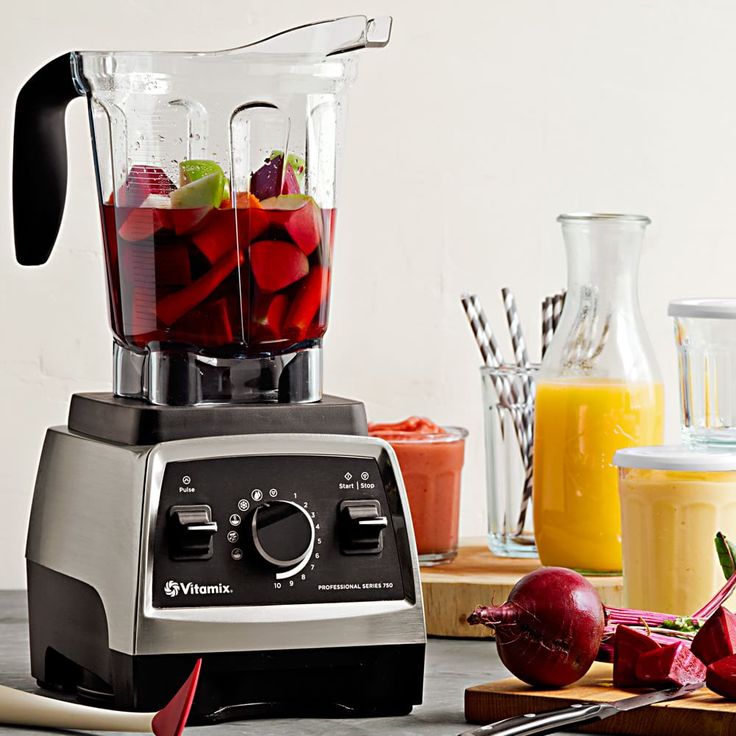 However, the first feeling that mom and dad face when it comes time to introduce complementary foods into a child's diet is confusion.
However, the first feeling that mom and dad face when it comes time to introduce complementary foods into a child's diet is confusion.
Which food is the most healthy, hypoallergenic and delicious? Most often, the first "real" meal of the crumbs after mother's milk and formula is vegetable or fruit puree. The choice of baby food on store shelves is very wide - each manufacturer tries to convince the buyer that jars with beautiful labels contain only natural products, there are no dyes, sweeteners and other harmful additives. A variety of "meals" for babies in factory packaging marked "3+ months." does not guarantee the true usefulness of the product that is inside. Every mother understands that complementary foods prepared on her own, from natural products, are much better for her child.
Another advantage of making your own baby food is that you can choose the best ingredients, wash fruits, berries or vegetables thoroughly, peel them well and remove damaged parts.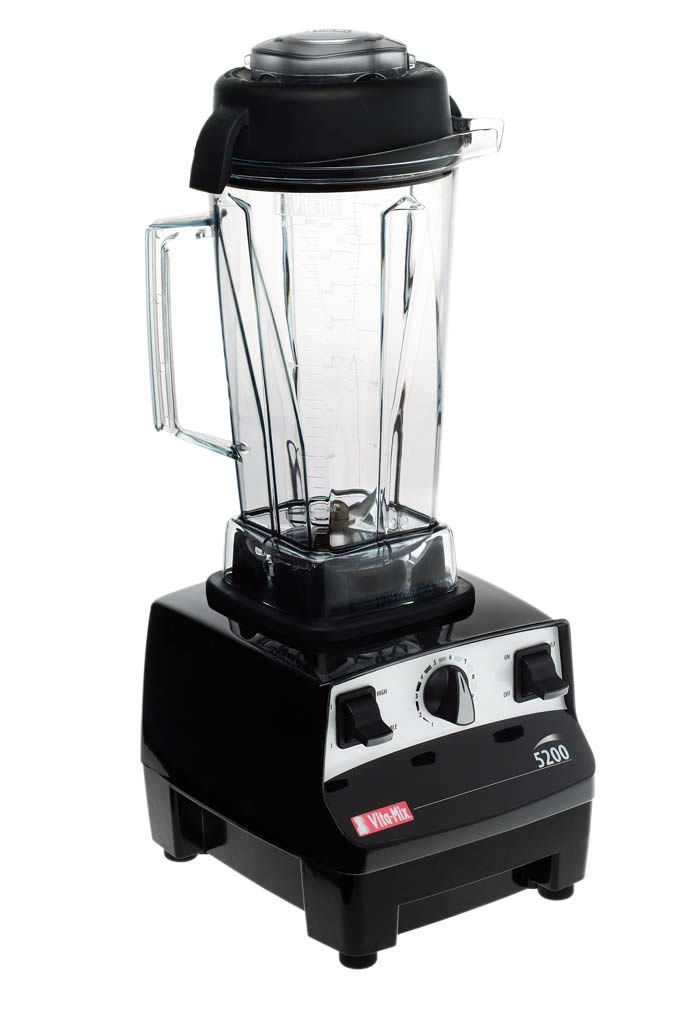 In addition, the parents of the crumbs themselves can choose the way - how best to cook baby food: food can not only be boiled, but also baked in the oven or cooked in a double boiler.
In addition, the parents of the crumbs themselves can choose the way - how best to cook baby food: food can not only be boiled, but also baked in the oven or cooked in a double boiler.
It is also important that home-made baby puree is much tastier, it will undoubtedly be useful for a growing body and will not cause allergies! Even the simplest children's dish, prepared by mom, keeps the warmth of caring hands and cannot be compared with expensive dishes from the store.
What should be the correct complementary foods for children? Of course, you should start with one ingredient (such purees are called one-component purees), then move on to more complex options. Experts emphasize that the most suitable product for the first "dish" is zucchini. Cauliflower can also be considered neutral. Gradually it will be possible to introduce carrots, pumpkins, potatoes, broccoli and green peas. At the first stage of the introduction of complementary foods, it is better to give preference to vegetable purees and switch to fruit purees when the child already treats “serious” food well.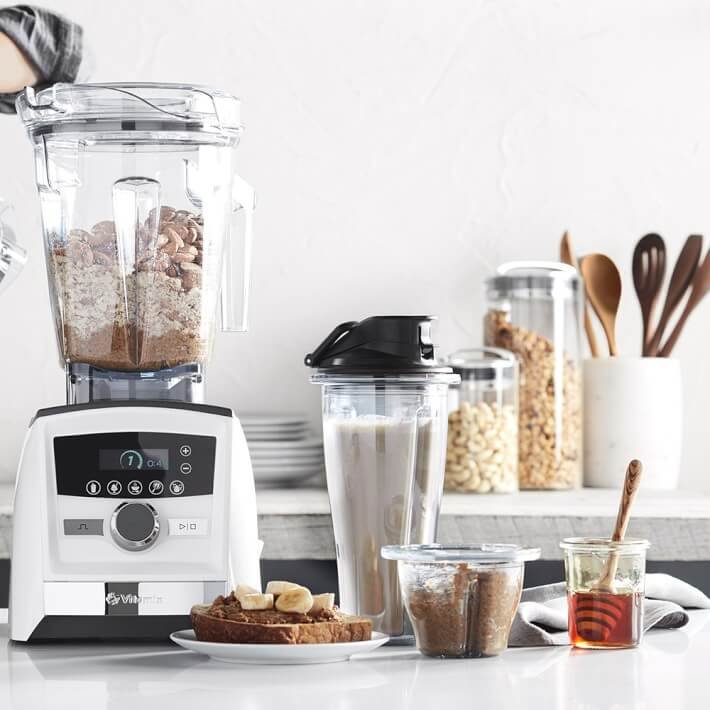
The basic rules and principles of preparing high-quality baby food yourself:
- it is best to take fresh products for preparations: fruits from the tree, berries from the bush and vegetables from the garden are much more useful than those that have already been in the refrigerator for a week. If there are no seasonal vegetables at the time of preparation, the use of frozen foods is acceptable, but in this case, try to give preference to whole fruits - they retain the greatest amount of nutrients;
- only filtered water should be used for cooking vegetables;
- the preparation of baby food requires, if not separate dishes, then thoroughly washed. Do not, for example, cut vegetables on a meat board. If there is a dog or cat in the house, then you need to restrict her access to the kitchen when food is being prepared;
- It is not recommended to use vegetables and fruits in the diet of infants, in which the content of chemical additives is consistently high.
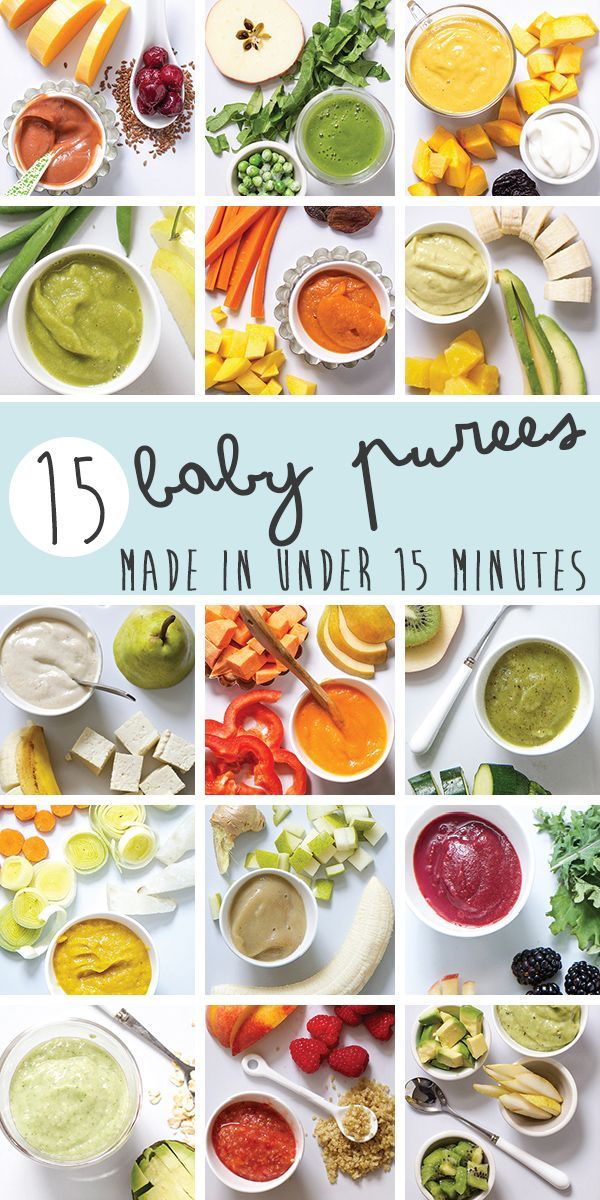 These often include watermelons and melons, beets, spinach and lettuce;
These often include watermelons and melons, beets, spinach and lettuce; - It is better to soak vegetables purchased on the market with water before cooking: put carrots, potatoes, zucchini and cauliflower in filtered water for a couple of hours - this will remove nitrates;
- do not leave excess mashed potatoes for the next meal: the child should be given only freshly prepared food, and "yesterday's" mashed potatoes are best eaten by adults or given to pets;
- you can choose cream, boiled egg yolk, grated cheese or finely chopped dill as an additive to puree - this will diversify dishes for children from 8 months;
- try it! Children's food can and should be enjoyed by an adult.
There is another question that often worries parents: is it permissible to preserve baby puree and how to do it correctly? After all, such complementary foods for the developing body of a small child must be prepared daily for one or even two or three years: until the baby is ready to eat adult food from the common table.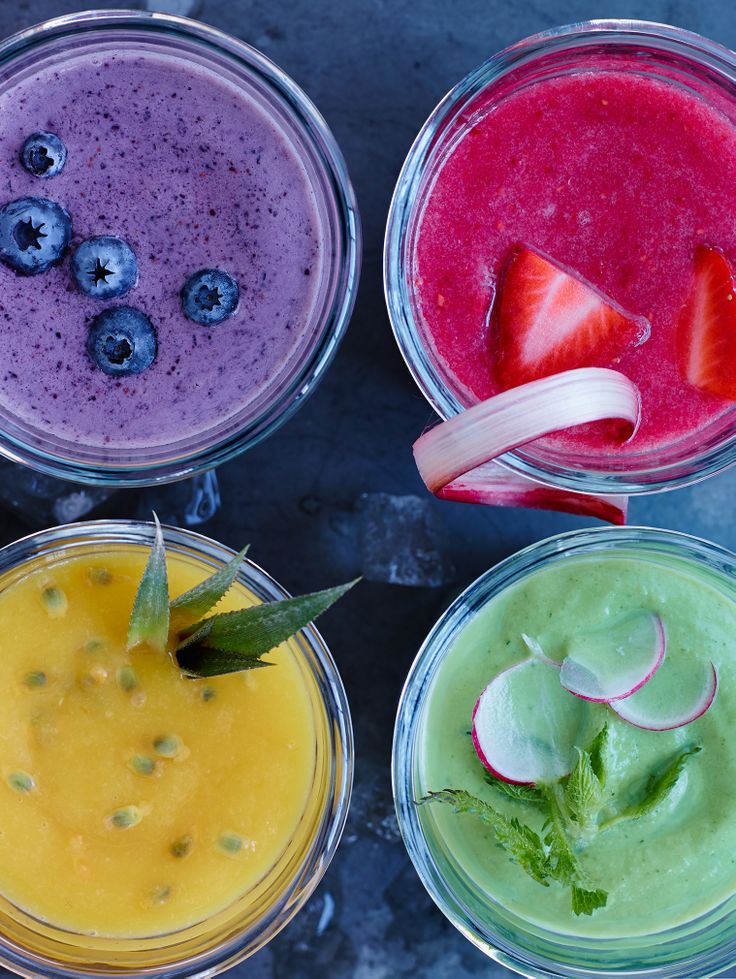 Not every mother has the time and opportunity to prepare baby puree daily, but you don’t want to buy food for the baby in the store. In addition, it is obvious that in the winter-spring period it is almost impossible to find fruits and vegetables grown without the addition of chemicals. The answer to the question is quite simple: the requirements for the conditions for preparing baby food are very strict (keeping the temperature, sterilizing jars, etc.), but using an autoclave solves all problems: all that is required is to load jars with blanks into the autoclave for 20 minutes and set temperature 120 degrees. After cooling, it is better to store baby food in a dark, cool place for about 12 months, daily delighting the child with homemade homemade food.
Not every mother has the time and opportunity to prepare baby puree daily, but you don’t want to buy food for the baby in the store. In addition, it is obvious that in the winter-spring period it is almost impossible to find fruits and vegetables grown without the addition of chemicals. The answer to the question is quite simple: the requirements for the conditions for preparing baby food are very strict (keeping the temperature, sterilizing jars, etc.), but using an autoclave solves all problems: all that is required is to load jars with blanks into the autoclave for 20 minutes and set temperature 120 degrees. After cooling, it is better to store baby food in a dark, cool place for about 12 months, daily delighting the child with homemade homemade food.
Pumpkin puree: tender and fragrant
Pumpkin is a delicious vegetable that is good for babies. This fruit has a beneficial effect on digestion, is well absorbed by the child's body and is rich in various vitamins: A, C, B, B2, E, PP, T. In addition, the carotene content in pumpkin is 5 times higher than in carrots!
In addition, the carotene content in pumpkin is 5 times higher than in carrots!
Baby pumpkin puree has a sweet taste, so the kids eat this dish with great pleasure. For preparations, it is better to buy small whole pumpkins, as they usually taste better than large ones and are easier to peel.
- Rinse pumpkin well under running water, peel, cut in half, remove seeds.
- Then you need to cut the fruit into small cubes, put in a saucepan and pour water. Cooking time after boiling - 20 minutes. You can also steam pumpkin: it will retain more nutrients with the same cooking time.
- The next step is to beat the cooked pumpkin with a blender until the consistency of a gentle puree. If the dish turned out to be thick, add water or milk (milk mixture).
- Vegetable oil and salt are added to pumpkin puree to taste, but these additives should be used with caution: only if they are acceptable for the age of the child.
For babies older than 8 months, pumpkin puree is supplemented with other fruits and vegetables, and also added to porridge.
Broccoli puree: simplicity and elegance
Broccoli is not just cabbage, but a storehouse of vitamins and microelements! Beautiful on the outside and fantastic on the inside - the high content of protein and vitamin C (there is more in broccoli than in citrus!) deserves special attention. There are many articles on the Internet about the benefits of broccoli, and preparing this product is not at all difficult.
To prepare this type of cabbage for baby food, you need to choose the highest quality product: the inflorescences must be unopened, green, moderately elastic.
- Broccoli should be washed, cut into pieces and boiled. Steaming will take 20 minutes, in water - faster: fresh cabbage should be boiled for a little more than 5 minutes, and frozen - at least 10. When cooking, do not pour a lot of water, it should only cover the vegetables a little.
- When the cabbage is cooked, take it out, transfer it to a blender bowl and grind to a puree state, add a little warm boiled water.
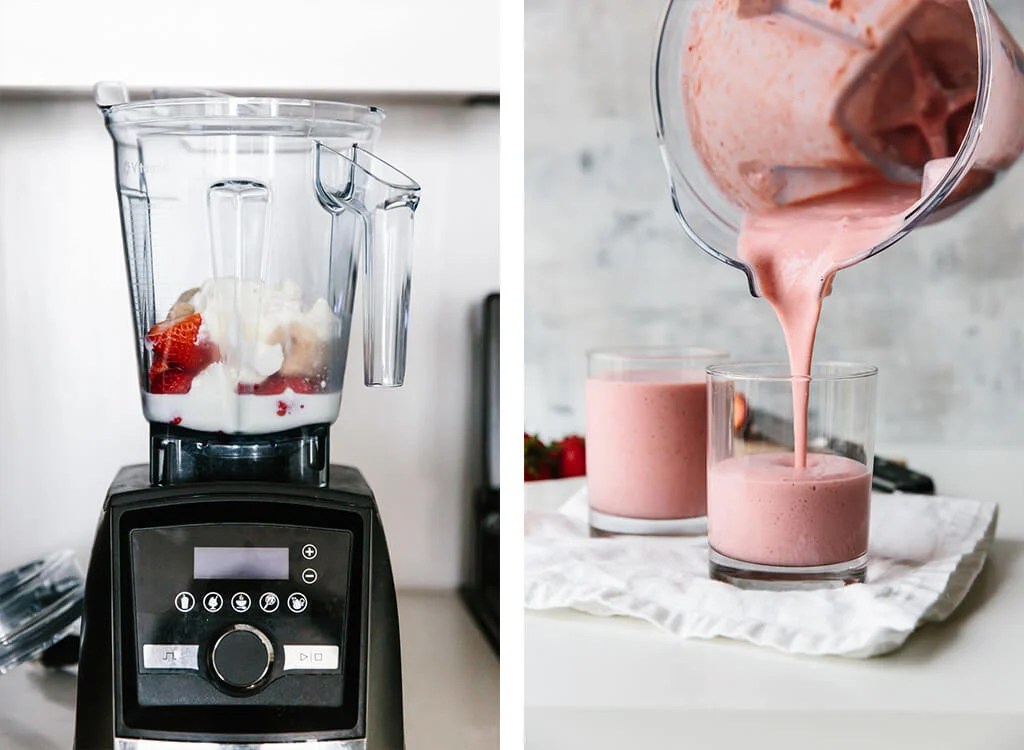
- Add salt and butter to taste.
Pear puree: a fragrant dessert
It's no secret that babies love fruit puree - almost all children like sweet dishes. The pear is a suitable option for the first one-component fruit food - a sweet fragrant fruit that has a high concentration of vitamins, stimulates digestion and almost never causes allergies.
If you want to cook a safe puree for your child at home, then it is best to choose green pears, these are the fruits that are considered to be the least allergenic.
- Fruit must be peeled, core removed with seeds, cut into cubes.
- Transfer the pear to a heavy-bottomed enamel saucepan, cover with a little water and simmer over low heat for 15-20 minutes.
- Then transfer to a blender and puree until smooth. If the puree is too thick, add a little warm boiled water.
- You can dilute the dish with milk or formula - it depends on the taste preferences of the baby.
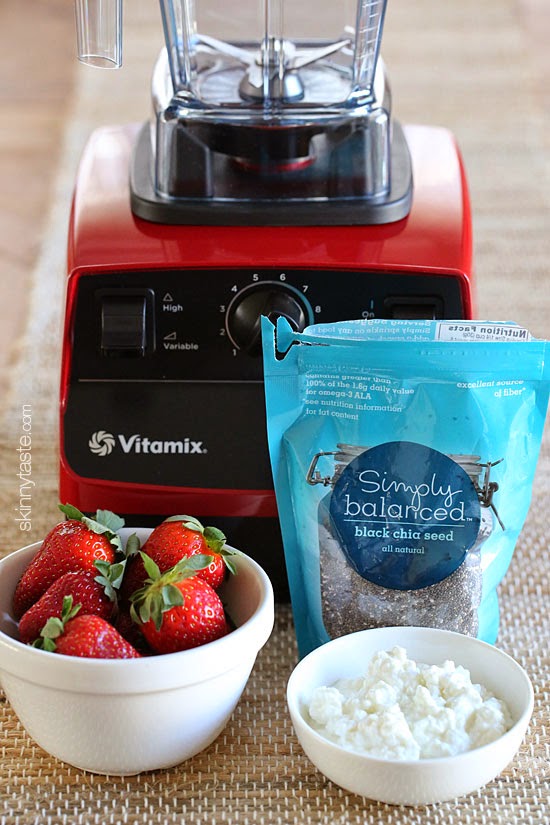
The same recipe is used for applesauce. In the future, try to combine these two fruits in one dish.
Classic apple-zucchini puree
A good appetite of a baby pleases every mother, but little gourmets are often capricious, and it is not easy to please them. Zucchini and apple puree is a classic combination of products that will diversify the baby's menu already in the fifth or sixth month of life.
This complementary food contains only hypoallergenic products, has a positive effect on the functioning of the heart, and stimulates the strengthening of the immune system.
- Selected products should be thoroughly washed, peeled, core removed from apples.
- Cut zucchini and apples into cubes, put fruits in a cooking pot first - they should cook for 5 minutes longer, and then vegetables. The total cooking time is 20 minutes.
- When the food becomes soft, it is necessary to grind it to a puree state using a blender.

- To taste - dilute with water, add salt, oil.
This puree can be considered an independent dish for the little ones or become a delicious side dish for older kids.
Colorful carrot-potato puree
For many parents, carrots and potatoes are the easiest and most understandable type of complementary food for the baby. However, if you cook and serve standard products a little differently than usual, you can improve the traditional taste of a classic dish.
For baby puree, young potatoes should not be chosen - they contain a lot of starch. Carrots, on the contrary, it is better to buy young ones.
- Wash the vegetables thoroughly, remove the skin and cut into cubes.
- It is better to steam the mashed potatoes and carrots, the vegetables should be boiled separately. Cook until tender, 20 minutes on average.
- Separately puree the vegetables in a blender, thinning with warm water if necessary.
Both types of puree are beautifully placed on a plate without mixing: the child can decide for himself whether to mix food or eat separately.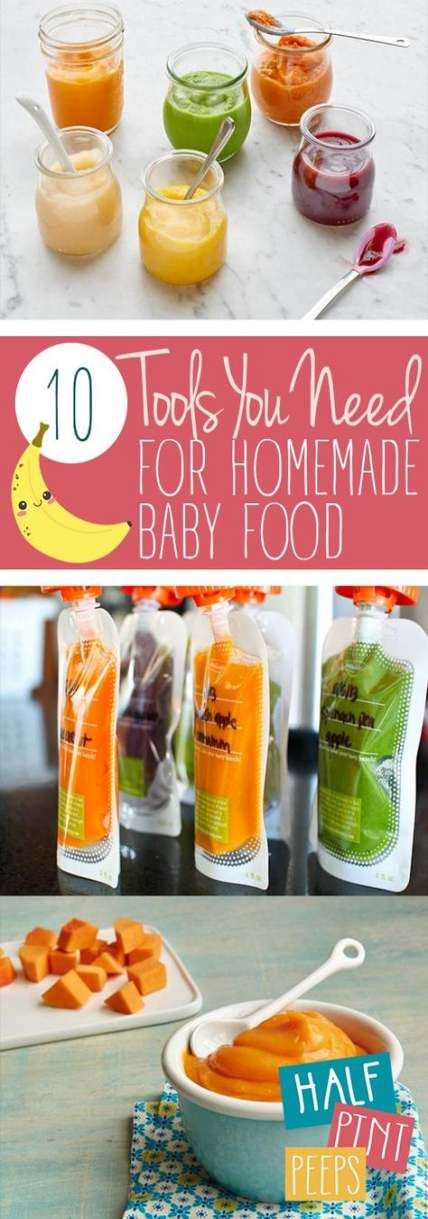
Exotic variety: mango puree
Tropical fruits should not be offered to a small child before the age of 7-8 months and only if there was no allergy to other foods.
Mango is an aromatic fruit with an original pleasant taste. This fruit helps to overcome colds, reduce inflammation in the body, improve sleep and normalize the functioning of the stomach.
To feed the baby, ripened fruits should be selected - quite soft, yellow-red in color.
- Fruit should be peeled and pitted, cut into cubes.
- Put the raw mango into a blender, purée, transfer to a heavy-bottomed pot and boil for a few minutes.
Older children may be offered uncooked mango puree. This fruit is completely independent - no need to add sugar or water!
Sweet pumpkin puree with apple
This puree is called sweet, since both pumpkin and apples are foods with sufficient sugar content. Such a dish is well suited as a dessert for children who already eat “serious” food well - vegetable purees and cereals.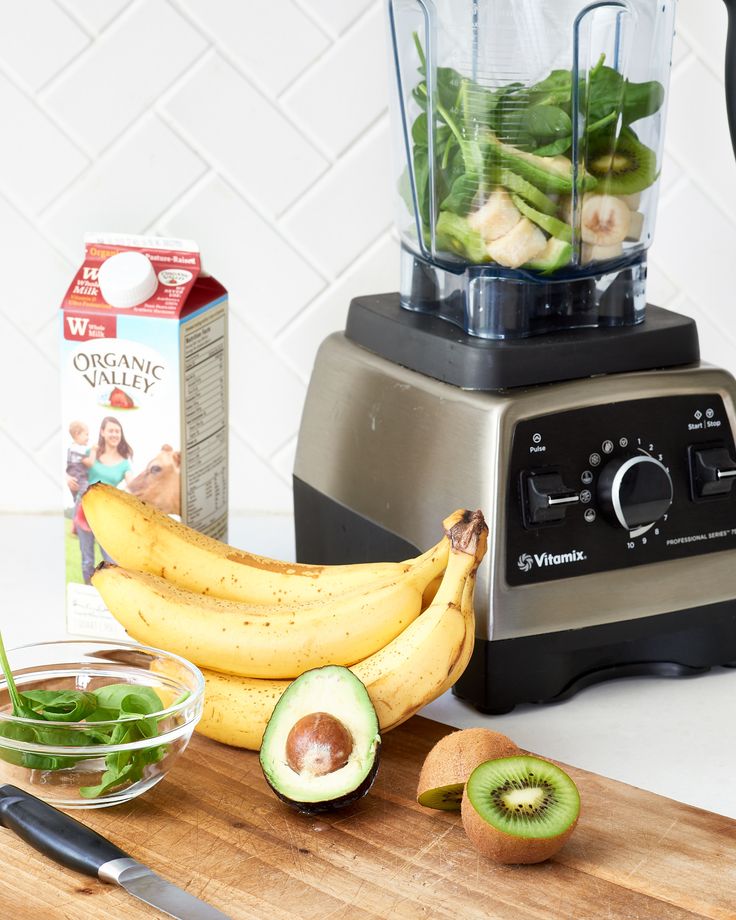
In addition, such complementary foods are a great option for the autumn-winter period: seasonal products contain enough choline, a lot of fiber, natural proteins and vitamins (groups A, B, C, E, etc.), zinc, sodium, calcium and only!
- Pumpkins and apples must be peeled, peeled and seeds removed, cut into cubes and sent to a double boiler.
- Cook for about 20 minutes until the food is soft. Then place them in a blender bowl, add raisins and chop. If the child chews well, mash everything with a fork, and leave the raisins whole.
Hearty puree with celery and turkey
For older kids, meat is added to vegetable dishes - turkey fillet is an excellent option for developing a child's taste preferences. Appetizing and fragrant meat puree includes only three ingredients: celery root, turkey fillet, butter.
The proportion of meat and celery should be approximately 10:1, the amount of butter to your taste.
- The turkey fillet must be boiled in the "second stock" for about 20 minutes after boiling.
